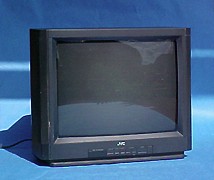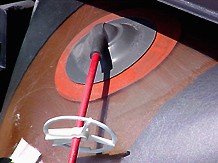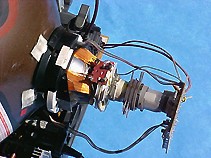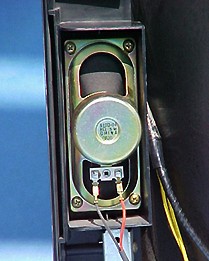 |
|
 |
| This flat TV screen is the
front of the cathode ray tube called the shadow mask. The screen is coated
with phosphor which glows when struck by the beam. |
|
Here is the back of the television,
usually covered by a plastic cover to protect the user from the electronics. |
 |
|
 |
| In the cathode ray tube (brown)
the cathode is a heated filament (like a light bulb filament) that exists
in a vacuum inside a glass tube. |
|
The ray or stream of electrons
(negative) pour off of the heated cathode into the vacuum. The anode (positive) |
 |
|
 |
| Steering coils or copper
windings create magnetic fields inside the tube. One of the coils creates
a magnetic field that moves the electron beam vertically, and the other
set of coils moves the beam horizontally. |
|
A circuitry board is used
to help control various settings on the TV. |
 |
|
 |
| RCA connections (red, white, and yellow)
can be used to attach a VCR, DVD, or computer game units. |
|
Stereo televisions have two speakers
to amplify the sound. |







